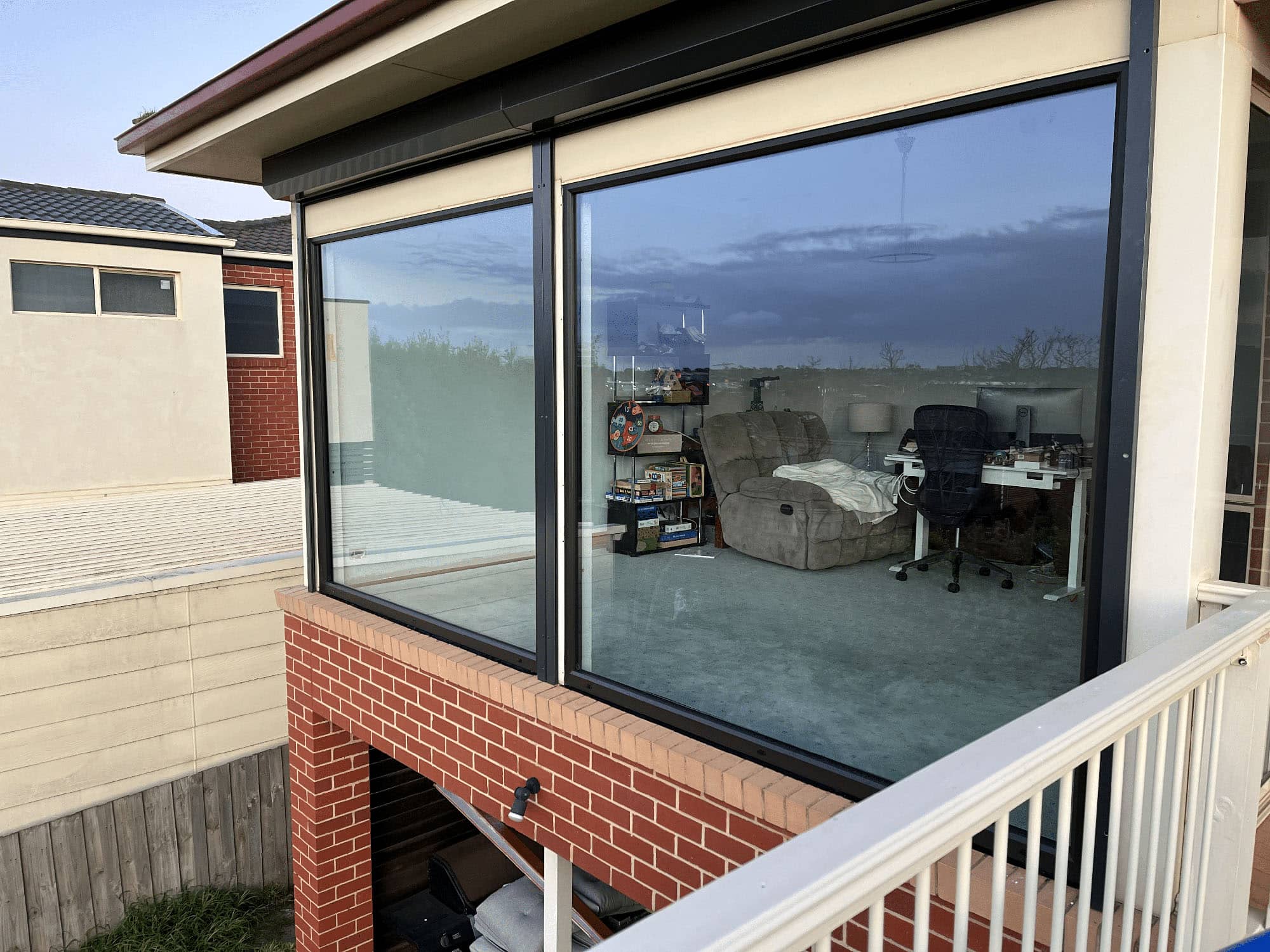Why Winter Window Preparation is Essential
As temperatures drop across Australia during winter, many homeowners notice a significant increase in heating costs—often caused by heat loss through poorly insulated windows. Older or unsealed windows can allow cold drafts, lead to condensation, and make it harder to maintain a consistent indoor temperature.
By taking a few proactive steps, you can boost your home’s energy efficiency, reduce your reliance on artificial heating, and stay warm without a spike in your energy bills.
Step-by-Step Guide to Winter-Proofing Your Windows
1. Check for Drafts and Air Leaks
Start by identifying gaps around window frames where cold air can enter and warm air escapes. You can do this by running your hand along the edges or using a lit incense stick to see if the smoke wavers.
Solutions:
- Apply weather stripping or draught excluders to sash and sliding windows.
- Use silicone sealant to close cracks between the window frame and wall.
- Consider installing foam tape or V-strip seals for a snug fit.
These quick fixes can make a noticeable difference in indoor comfort and heat retention.
2. Upgrade to Double or Triple Glazing
Single-glazed windows are a major source of heat loss. Upgrading to double-glazed windows can reduce heat transfer by up to 60%, while triple glazing offers even better insulation though it’s typically used in colder climates or high-performance homes.
In most Australian homes, uPVC double-glazed windows provide the best balance of cost, efficiency, and performance during winter.
3. Install Thermal Curtains or Blinds
Thick, insulating curtains create a barrier between your warm interior and cold glass panes. Opt for layered drapes with thermal backing, or use cellular blinds that trap air in their honeycomb structure.
Close curtains at night to retain warmth and open them during the day to let in sunlight and passive heat.
4. Use Window Films for Extra Insulation
Insulating window films can be applied directly to glass to reduce heat loss. These transparent sheets are a cost-effective, DIY-friendly solution that works well on older single-glazed windows.
Look for Low-E (low-emissivity) films to help reflect heat back into the room and reduce condensation.
5. Maintain and Clean Your Windows
Grime, dust, and damaged seals can impact the efficiency of your windows. Keep tracks, sills, and glazing clean, and inspect hardware and seals for wear and tear.
Winter cleaning tips:
- Use a soft cloth and non-abrasive cleaner.
- Avoid cleaning in freezing temperatures to prevent cracking.
- Ensure weep holes and drainage are clear.
6. Prevent Condensation and Mould Growth
Condensation forms when warm indoor air hits cold glass, often leading to mould and moisture damage. This is common in winter when homes are closed up.
Tips to manage moisture:
- Use exhaust fans in kitchens and bathrooms.
- Open windows slightly during the day to improve ventilation.
- Use a dehumidifier in problem areas.
Upgrading to double glazing also helps by keeping the inner glass surface warmer, reducing the chance of condensation.
Should You Consider Window Replacement for Better Insulation?
If your windows are old, warped, or single-glazed, replacement might be the most cost-effective long-term solution. New uPVC double-glazed windows offer:
- Superior thermal performance
- Improved air tightness
- Low ongoing maintenance
While the upfront cost may be higher, the energy savings and improved comfort make it a smart investment—especially in colder regions of Australia.
Why Choose Blue Sky Windows for Winter-Ready Solutions?
At Blue Sky Windows, we design and install custom uPVC windows engineered for Australia’s climate. Our double-glazed systems improve energy efficiency, reduce condensation, and keep your home warmer throughout winter.
We offer tailored recommendations, expert installation, and a range of window styles to suit any home—from modern renovations to traditional builds.
Preparing your windows for winter is one of the most effective ways to stay warm, reduce heating costs, and protect your home from moisture and drafts. From sealing air leaks and installing thermal curtains to upgrading to double-glazed uPVC windows, each step contributes to a more comfortable and energy-efficient home.
Need help winter-proofing your windows? Contact Blue Sky Windows today for expert advice, high-performance glazing, and customised solutions built for Australian winters.
